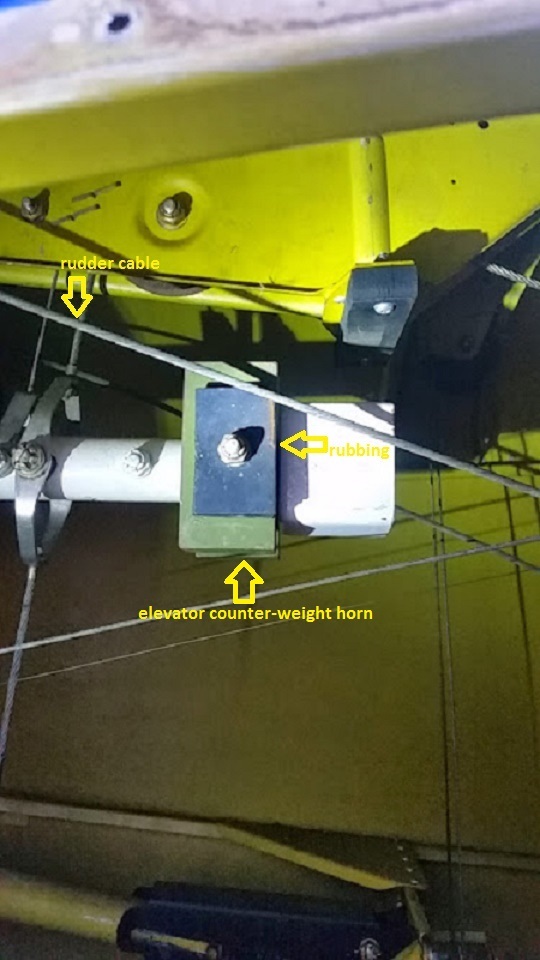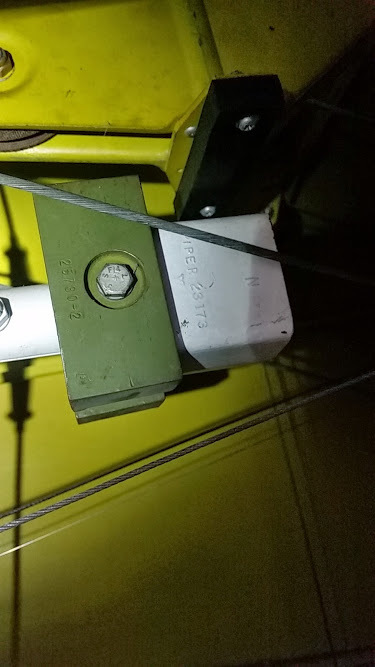Maintenance Induced Failures, or for short MIFs, are far too frequent.
To wit: In the last 2 weeks I discovered 3 MIFs with varying consequences.
N 1 – A Cirrus client calls me saying the left main tire is flat can I come over and fix it ? As I suspected, the tire tube was incorrectly installed and was pinched when the two-part wheel was re-assembled. Thank-fully this was discovered at the owners’ hangar and not far from home or worse on landing …
N 2 – Since I’ve owned my Lancair Columbia I’ve had an annoying shimmy when using the brakes. I tracked it down to the right wheel and decided it must be the brake disc that was warped. I replaced the disc only to find the shimmy worse ! So I put the airplane on stands and started looking very carefully at everything in the main gear. I couldn’t believe what I found: at some point, a mechanic that had removed the right stub axle inadvertently re-installed the “wedge” that determines the toe-in alignment of each main wheel. So instead of having 3° of toe-in on both right & left, I had 3° of toe OUT on the right side ! The “fix” took all of 10 minutes to correct but I couldn’t help to wonder how long it was like that …
N 3 – I look after a Twin Comanche that was recently flown from Los Angeles to Tahiti then Tahiti to Paris. The owner had lent it to another pilot and that pilot called me last week to say that they had a total alternator failure in IMC and that they had to leave it at another airport and come home by car. I drove out to the airport today and tested the entire electrical regulator charging system but found no fault. I finally pulled the cowls to have a look at the alternators themselves, thinking it extremely improbable that BOTH alternators would fail at the same time … I was shocked to see that, indeed, both left & right alternator V-belts were broken ! careful examination showed that the V-belts were too large and had worn through the back side that has all the fibre reinforcement, amazingly within an hour or two of each other despite some 300 hours in service !
Clearly, Ns 1 & 2 were inadvertent mechanic F-ups. Stupid and avoidable mistakes.
N 3 is most probably a mis-guided ad-hoc “improvement”, that is, the mechanic probably thought that a wider, heavy-duty belt would be better and out-last the normal sized thin v-belt. Wrong. There is little room for improvising in aviation mechanics.
Why am I not surprised?
I have seen much worse done to my plane.
I have one such story from 2009. Picked up my DA40 TDI after annual service at Polish Diamond dealer and flew home. After 45 minutes in cruise the engine started to develop problems. Power was fluctuating, 100% was not available. It would stop making power at all for short periods. I landed at nearest airfield. Had to fly a few minutes over a forest to get there. Scary.
Few days later, service came to the airfield. They were unable to fix it over the next few months. Engine wouldn’t start. They blamed me for using diesel instead of Jet-A1.
Eventually I had to call Diamond in Austria and ask for help. For 8K EUR they came with a trailer and took the aircraft home. Next day I got an email with photos of an incorrectly crimped wire in a fuel rail plug.
Airplane flies fine since, but I don’t pick it up from annual service any more :)
It does strike me that these modern engines are potentially less “maintenance proof” than the traditional Lycoming/Continental.
Advanced technology typically means more complexity, more complexity means a high probability of the maintenance engineer not fully understanding the full system and/or not understanding the correct procedures for servicing.
It does strike me that these modern engines are potentially less “maintenance proof” than the traditional Lycoming/Continental.
I think the problem is that
That’s a bad recipe in GA because (in the same order)
In the modern car business this is addressed by mandatory training for dealers’ workers but they have been building up to this for decades, whereas GA has been “simple” for decades and then suddenly we have got FADEC engines which need a lot more care and expertise.
Eventually I had to call Diamond in Austria and ask for help. For 8K EUR they came with a trailer and took the aircraft home. Next day I got an email with photos of an incorrectly crimped wire in a fuel rail plug.
Did Diamond cover your expenses?
Peter wrote:
Why am I not surprised?I have seen much worse done to my plane.
You want worse, ok here’s a way worse one :
Same Twin Comanche that had the double alternator v-belt failure above, arrives at my hangar after a 10 day – 100 hour journey from Tahiti to Paris. Obviously it was in need of a good 100 hour inspection and oil change.
I pull it into my hangar and do the first “walk around” checking things out. When I pushed the stabilizor up and down I could hear a metal-to-metal grinding noise. Clearly this was not normal …
I pulled the inspection plate in the tail to get a look at the elevator cables.
Here’s what I found :

If the pilot simultaneously push the yoke forward while stepping on the right rudder pedal, that rudder cable would get hooked under the protruding bolt head !
Had that happened in flight, a crash would have been inevitable ….
The PROPER counter-weight installation :

Peter wrote:
whereas GA has been “simple” for decades and then suddenly we have got FADEC engines which need a lot more care and expertise.
What part of GA you mean? Cables (electrical systems) are hardly a new thing.  Yes, more complex means more opportunities to screw up. The really sad part in this instance is that they could not diagnose the problem.
Yes, more complex means more opportunities to screw up. The really sad part in this instance is that they could not diagnose the problem.
In the modern car business this is addressed by mandatory training for dealers’ workers
And yet they are still often unable to solve problems. Instead they employ trial and error, a very expensive pastime. Not to mention they tend to replace whole assemblies instead of repairing them.
@Michael That’s nasty. BTW: Tahiti? Was a ferry tank used?
Martin wrote:
Tahiti? Was a ferry tank used?
That TT Comanche has wing tip tanks and wing locker tanks STC, but a Turtlepack wad thrown in for good measure !